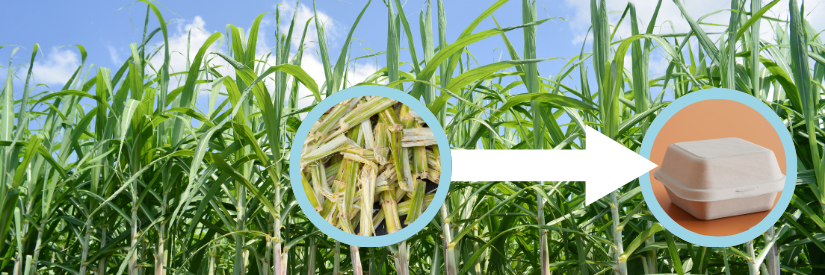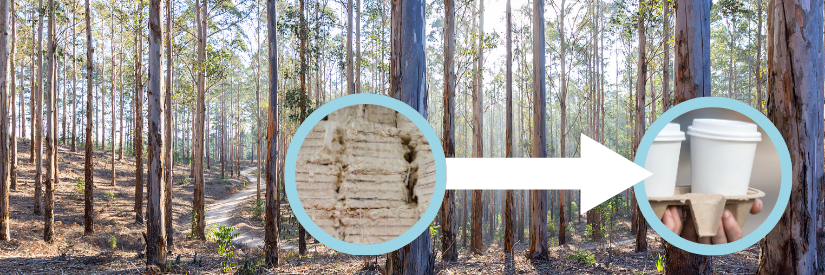
Both sugarcane and paper pulp are sustainable materials that can be processed into various consumable products. Here’s a deeper dive into how these materials are turned into eco-friendly products.
Sugarcane (Bagasse)

Sugarcane is an incredibly sustainable resource. The plant proliferates and is highly renewable, requiring little water and minimal land space. After sugarcane is harvested, the juice is extracted, leaving behind a fibrous residue known as bagasse, which we’ve crafted into various eco-friendly products.
The Manufacturing Process:
- Harvesting and Extracting Juice: Once sugarcane is harvested, the juice is extracted, and the fibrous pulp (bagasse) is separated.
- Processing Bagasse: The bagasse is then dried and pressed into various forms, such as trays, plates, bowls, or takeaway containers.
- Shaping and Moulding: The bagasse pulp is heated and moulded into the desired shape. No chemicals are required in this process, making it safer for the environment and workers.
- End Use: After use, these products can be composted or disposed of in an environmentally responsible manner.
Sugarcane pulp is mainly used in food service and packaging due to its biodegradability, compostability, and renewable nature. This process is less resource-intensive than plastic production, and bagasse is often considered a highly eco-friendly alternative.
Paper Pulp

Paper pulp is created from wood fibres, often from responsibly managed forests. Making paper pulp consumables involves breaking down the wood into fibres, which are then processed and shaped into trays, boxes, and disposable cups.
The Manufacturing Process:
- Harvesting Wood: Wood from certified sustainable sources is harvested and broken down into wood chips.
- Pulping: The wood chips are processed into pulp using mechanical or chemical methods. The pulp is then washed to remove impurities.
- Shaping: The pulp is moulded into shapes (such as trays or containers) and dried.
- Finishing: Once dried, the paper pulp products are ready for use in packaging, food containers, or protective packaging.
Creating paper pulp products is relatively low-energy and water-efficient, mainly when sourced from FSC-certified wood. These products are biodegradable, recyclable, and compostable, making them a sustainable option for many applications.
How to Switch to Sustainable Alternatives
Making the switch to sustainable consumables is easier than you might think. Here’s how you can start:
- Evaluate Your Current Consumables: Look at the products you currently use and assess their environmental impact. Are they biodegradable, recyclable, or compostable? Do they come from responsibly sourced materials?
- Choose Eco-Friendly Materials: Consider alternatives like sugarcane-based products or paper pulp for consumables. Look for biodegradable or compostable options for single-use items such as plates, cutlery, and cups.
- Opt for FSC-Certified Products: If you use paper-based items, such as napkins, food containers, or packaging, choose FSC-certified products to ensure they are sourced responsibly.
- Consider Local Suppliers: Whenever possible, buy from local suppliers who prioritise sustainability in their production processes. This reduces carbon emissions from transportation and supports the local economy. Livingstone’s range of beauty and cleaning products is made in Australia, ensuring that your purchases contribute to local sustainability efforts.
Switching to more sustainable consumables, such as those made from sugarcane and paper pulp, is crucial in reducing our environmental impact. By understanding the processes behind biodegradable, compostable, recyclable, and FSC-certified products, we can make more informed decisions about our materials. We move closer to a more sustainable, eco-conscious future with every slight change.
Read More:
Sustainability Practices: Comparing Eco-Friendly Alternatives…
